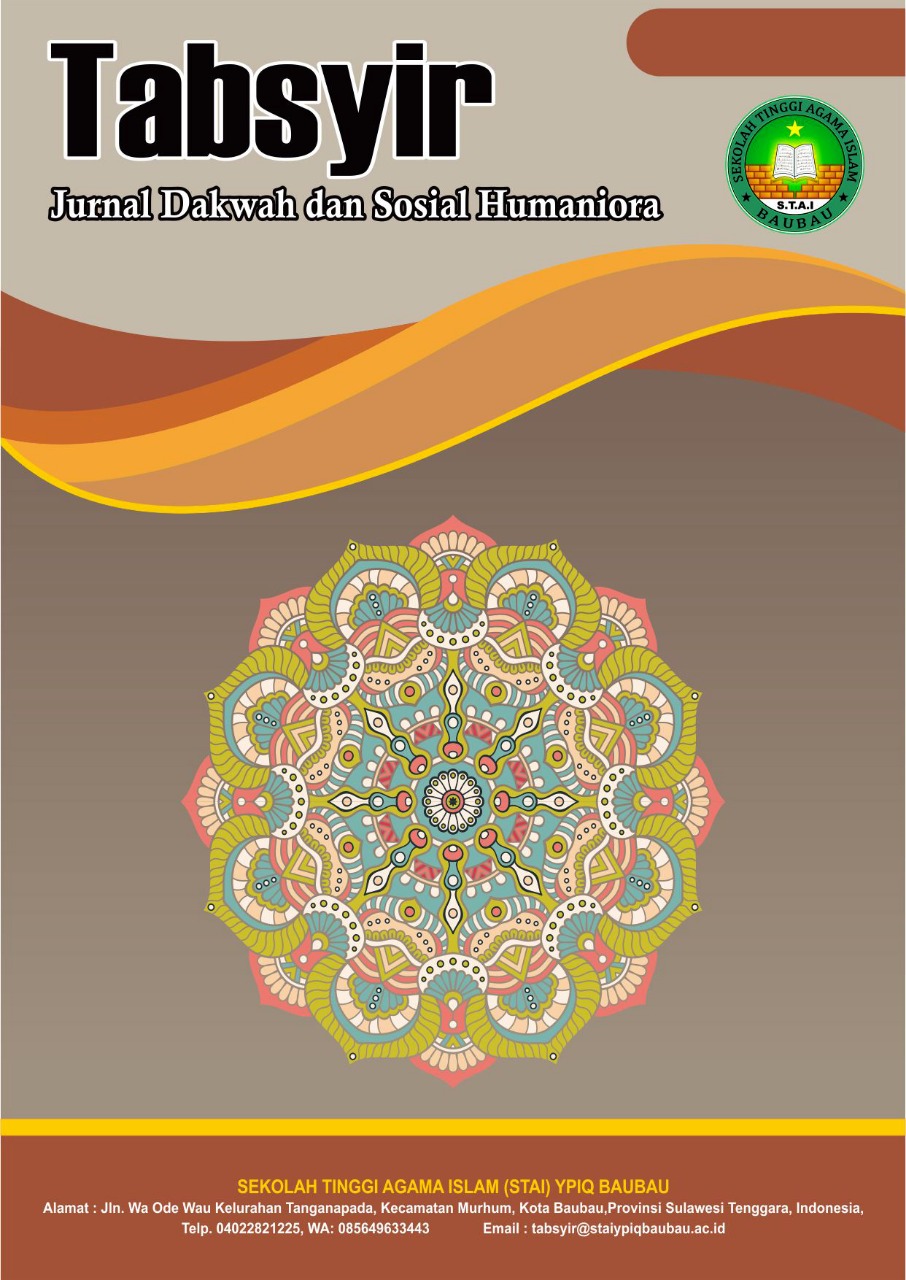Studi Pemahaman Hadis Memakai Sandal Ketika Shalat
DOI:
https://doi.org/10.59059/tabsyir.v6i2.2066Keywords:
Hadith, Wearing Sandals, PrayerAbstract
The research used is the library research method. The primary data sources in this study are hadiths about wearing sandals when praying, including the Sahih Bukhari Book, the Sahih Muslim Book, the Sunan Abu Daud Book, the Sunan Tirmidzi Book, the Musnad Ahmad bin Hambal, etc. The results of the studyHadith of wearing sandals when praying In this classification, the hadiths have the same wording and meaning, namely the statement of the Prophet praying using sandals. Hadith of not wearing sandals when praying In this classification of hadith, the Prophet took off his sandals during congregational prayers when the conquest of the city of Mecca and the actions of the Prophet were followed by his companions, and the reason the Prophet took off his sandals was because the Angel Gabriel told him that there was dirt on the Prophet's sandals. And it is explained in the sound of the hadith from another path, by rubbing the sandals on the ground in an effort to clean the sandals from dirt. And when taking off sandals it is advisable to prioritize the comfort of others. In terms of wording, the Prophet stated that he prayed with sandals and sometimes not. As for the prophet's editorial to differentiate (differentiate) between Muslims and Jews, the Prophet ordered to wear sandals when praying. In historical, sociological and anthropological context. The space and time when the Messenger of Allah performed or recited the hadith of wearing sandals when praying, in the early period of Islam there were not so many mosque buildings built and still had pedestals, so the Messenger of Allah gave concessions (rukhsah) on the face of this earth to create a mosque that could be used as a place of prayer. So it is possible to wear a khuf or na'lun when praying with the condition that it must be pure from the major and minor hadas. If we look at modern times, mosques have been built with ceramic or floor coverings.
References
Albani, S. M. N. (2015). Watak Ash-Shalah an-Nabi (R. Wakhid, Trans.). Jakarta: Disthi Press.
Al-Fauzan, A. (2005). Fiqh Tiap Hari. Jakarta: PT. Dengung Insani Press.
Ali, N. (2011). Menguasai Perkataan Nabi Rasul: Tata Cara Serta Pendekatannya. Yogyakarta: IDEA Press.
Al-Khatib, M. A. (1989). Ushul al Perkataan Nabi: Ulumul Wa Mushthalahu. Beirut: Dar al-Fikr.
Al-Yassu’i, L. M. A. Y., & Tottel, B. (2002). Al-Munjid Fi Al-Lughah. Beirut: Dar al-Masyriq.
Asqalani, I. G. al. (2002). Fathul Baari (G. A. U., Trans.). Jakarta: Pustaka Azzam.
Az-Zuhaili, W. (2010). Fiqih Islami Wa Adillatuhu (A. H. al-Kattani, Trans.). Jakarta: Dengung Insani.
Damsyiqi, I. H. A. H. A. D. (2005). Asbabul Wurud: Kerangka Balik Historis Tampaknya Hadits-Hadits Rasul (S. Keagungan, Trans.). Jakarta: Kalam Mulia.
Hasan, M. A. (2000). Kearifan Shalat Serta Tuntunannya (Vol. 1). Jakarta: PT. Raja Grafindo Persada.
Hasibuan, I. E. (2008). Shalat Dalam Perspektif Fikih Serta Kebatinan. Pekanbaru: Dengung Syukran Press.
Ismail, S. (1994). Perkataan Nabi Rasul yang Tekstual Serta Kontekstual. Jakarta: Bulan Bintang.
Kekal, A. A. T. M. S. H. al-Azami. (2010). Aunul Ma’bud Syarah Sunan Abu Daud (Vol. 3). Jakarta: Pustaka Azzam.
Manzur, I. (2002). Lisanul Arab. Cairo: Dar al-Hadis.
Muhsin, S. A. B. A. al-Badr. (2020). Syarh Syama'il An-Nabi Li Abi Isa Muhammad Bin Isa at-Tirmidzi (R. S. Masturi, Trans.). Jakarta: Pustaka Al-Kautsar.
Nasional, U. P. (2018). Kamus Besar Bahasa Indonesia. Jakarta: Pusat Bahasa.
Qardawi, Y. (2009). Tata Cara Serta Aplikasi Pemaknaan Perkataan Nabi. Yogyakarta: Teras.
Qardhawi, Y. (1995). Kaifa Nata’ Kebaikan Ma’a Sunnah Al-Nabawiyyah. Bandung: Kaarisma.
Rasjid, S. (1994). Fiqh Islam. Bandung: Cahaya Terkini Algesindo.
Sahriansyah, A. (2014). Ibadah Serta Adab. Yogyakarta: IAIN Antasari Press.
Utsaimin, M. B. S. al. (2016). Syarah Shahih al-Bukhari (Vol. 2). Jakarta: Darus Sunnah.
Yaqub, A. M. (2016). Metode Betul Menguasai Perkataan Nabi. Jakarta: Pustaka Firdaus.
Downloads
Published
How to Cite
Issue
Section
License
Copyright (c) 2025 Tabsyir: Jurnal Dakwah dan Sosial Humaniora

This work is licensed under a Creative Commons Attribution-ShareAlike 4.0 International License.










